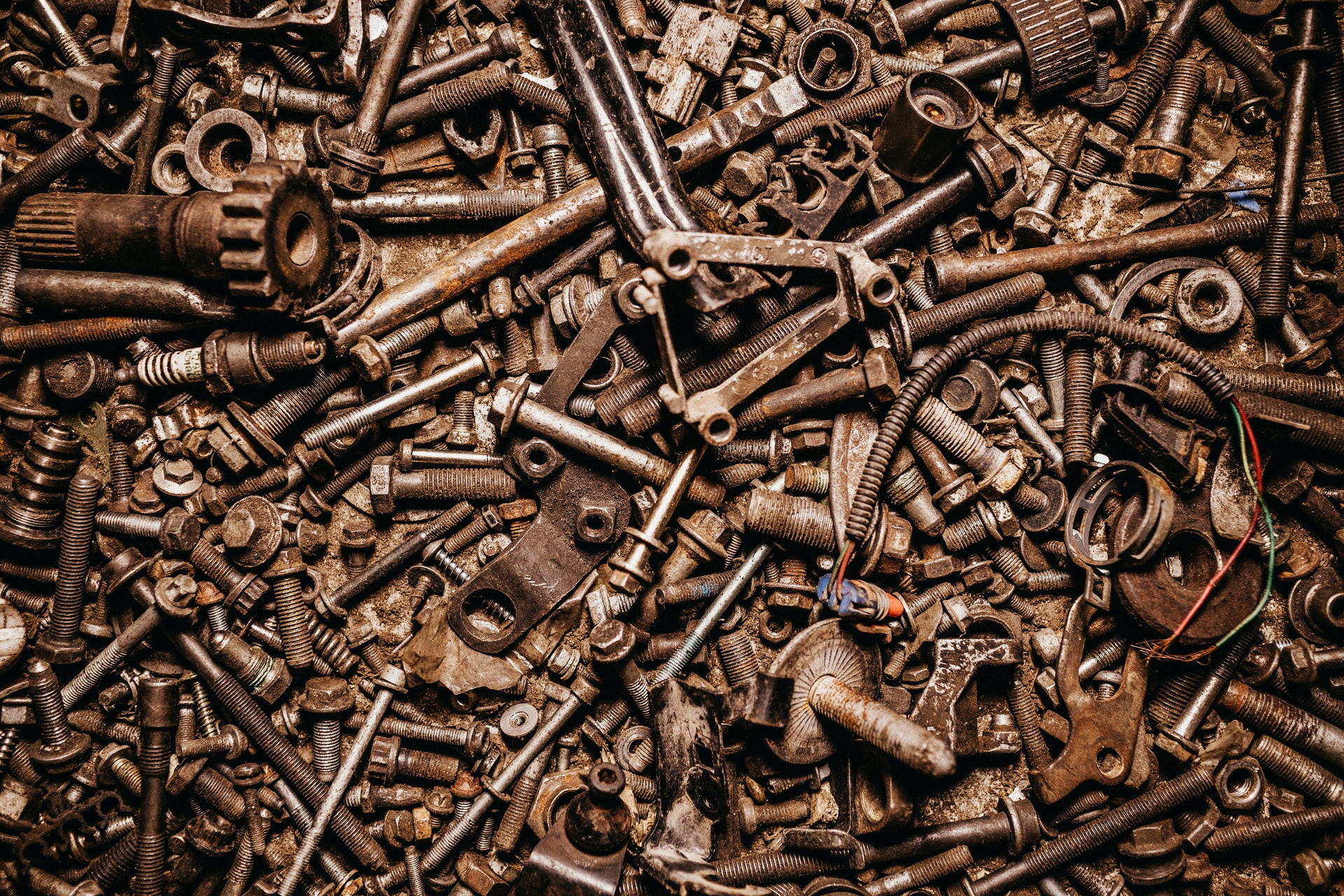Cobalt. Copper. Lithium. Nickel. Platinum. Zinc. And don’t forget the rare earth elements, especially neodymium. These and dozens of other metals and minerals are critical for technologies central to the clean economy transition — especially electric vehicles. And none are in particularly abundant supply, at least not in the places where they are needed.
That reality, coupled with growing pains related to the semiconductor shortage and supply chain disruptions that dragged down the electronics and automotive sectors throughout 2021, is the catalyst for a marked rise in initiatives aimed at "mining" materials from products already in circulation and out of the waste streams associated with virgin extraction of natural resources.
Virtually every member of the metals value chain is digging into this — notably specialized recyclers such as Aurubis (copper), Johnson Matthey (platinum) and Umicore (gold) and some of the world’s largest mining companies, including Rio Tinto, Anglo American, Glencore and Sibanye. Vulnerable manufacturers, especially big automakers, are also leaning into projects.
"It is clear that the biggest mine of the future has to be the car that we already built, and that we need to get into a 100 percent or near-100 percent recyclability of these precious resources," noted Daimler AG Chairman Ola K llenius during a speech at COP26, the global climate summit held in November. He was referring primarily to EV batteries, although many car manufacturers are using recycled metals and minerals for other purposes. K llenius added: "It’s something that comes later, but you need to develop the technology now to get it done."
Rediscovering and recovering metals
Clearly, we’re at an inflection point. Witness the multibillion-dollar investment announced in September by Ford Motor Co. to build out a domestic supply chain for battery production in Tennessee and Kentucky. Plus Ford has invested millions in Redwood Materials, a Nevada-based startup led by Tesla cofounder JB Straubel that can recover up to 95 percent of the nickel, cobalt, lithium and copper out of spent EV batteries and turn it into anode copper foil and other materials for future production. Redwood already works with Amazon and Tesla to mine batteries and electronic waste. Pretty much any automotive OEM you can name, from Volkswagen to General Motors, is piloting metals recovery.
How important will recycling and circular mining activities be for the future of metals, precious and otherwise?
Last October, the think tank Wilson Center published a frank analysis of the U.S. supply chain for minerals critical for the energy transition, citing recycling as important in satisfying growing demand. Recovered materials already account for half of the U.S. supply of nickel, as well as 29 percent of cobalt consumption and 38 percent of copper. Giulia Siccardo, a partner at McKinsey focused on the automotive sector, says materials recovered from what she dubs "urban mining" operations could account for up to 40 percent of the demand for EV batteries by 2040. "The demand is clear, the need is clear," she notes. "We’re going to need to tap into this sustainable resource that we are sitting on."
The matter of which organization "owns" this activity — as well as the recovered materials — is still very much in flux.
Consider Rio Tinto, the world’s second-largest metals and mining corporation, which is refining methods for extracting at least six materials from waste. In Boron, California, it is testing a way to extract lithium, potentially producing up to 5,000 metric tons annually, enough for about 70,000 EVs. Rio Tinto is recovering scandium (used in fuel cells), tellurium (in thin-film photovoltaic solar panels) and anhydrite (for safer fertilizer). One company buying into these initiatives is Schneider Electric, which in June signed on with Rio Tinto to support low-carbon, circular sourcing of metals such as aluminum and copper.
As Anglo American CEO Mark Cutifani told Accenture: "A shift toward a more circular economy presents a significant opportunity for mining companies that are willing to embrace it by reimagining their businesses and partnering with the intermediate and end users of the essential metals and minerals they produce."
Several large-scale metals recycling companies are forging innovative strategies to mine materials from ore and objects outside of actual mines. London-based Johnson Matthey is one of the largest players in the recovery of platinum group metals, critical for fuel cells, laboratory equipment and in membranes for electrolyzers used in the production of green hydrogen. And Aurubis, of Hamburg, Germany, in November announced plans to invest more than $325 million to start building the first U.S. smelter for multi-metal recycling, in Augusta, Georgia. The site, slated to open in 2024, will produce about 35,000 tons annually of blister copper, used for chemical refining.
Reaping the benefits of circular mining
Alongside improved supply-chain resilience, the most obvious environmental and social benefit of circular mining activities is the potential to minimize the impacts of developing new mines, which scar natural landscapes, damage fragile ecosystems, threaten biodiversity, negatively affect water quality and affect the health and livelihoods of communities where they’re located. In some instances, circular mining could help remediate damage at old sites; in June, the U.S. Department of Energy awarded $18 million to eight projects developing ways to extract rare earths and other minerals from coal waste and coal ash sites. The idea, in part, is to create new economic development opportunities and jobs for these struggling coal communities.
There’s certainly no shortage of potential feedstock for metals extraction: of the roughly 50 million metric tons of electronic waste produced annually, only 20 to 25 percent is recycled in any fashion, according to research by the World Economic Forum. Tycho Moencks, managing director at Boston Consulting Group, notes the biggest gating factor to circular mining will be how to recover stuff and get it to the places where it can be processed safely, while ensuring individuals involved in the collection are treated humanely and compensated fairly. That’s regardless of where collection happens, whether a rural Appalachian community or a critically important existing source for metals, such as the Democratic Republic of the Congo.
While circular mining has potential application across all industries, it’s likely to progress most quickly in sectors where there is a high degree of consumer scrutiny of environmental, social and governance (ESG) practices and where companies are willing to support the price premium of 1 to 2 percent attached to many of these materials. "The general demand for materials with a low carbon footprint is strong and will grow stronger and stronger," Moencks says. "The question is whether someone is willing to pay more per ton."
Key players to watch:
Aurubis — the world’s largest copper recycler, from Germany, is investing more than $325 million in a multi-metal recycling plant in Georgia slated to open in 2024.
Circular Electronics Partnership — is a multistakeholder initiative focused on building systemic approaches to electronics collection so that a higher percentage can be reused.
Ford Motor Co. — is making a multibillion-dollar bet on EV battery recycling with new factories in Kentucky and Tennessee.
Redwood Materials — is a Nevada-based startup fronted by Tesla co-founder JB Straubel that can extract up to 95 percent of the lithium, nickel, cobalt and copper from spent EV batteries.
Rio Tinto — the Anglo-Australian mining giant is refining methods for extracting at least six metals and minerals from waste ore and other sources.
Image: Jonathan Borba (Unsplash)



